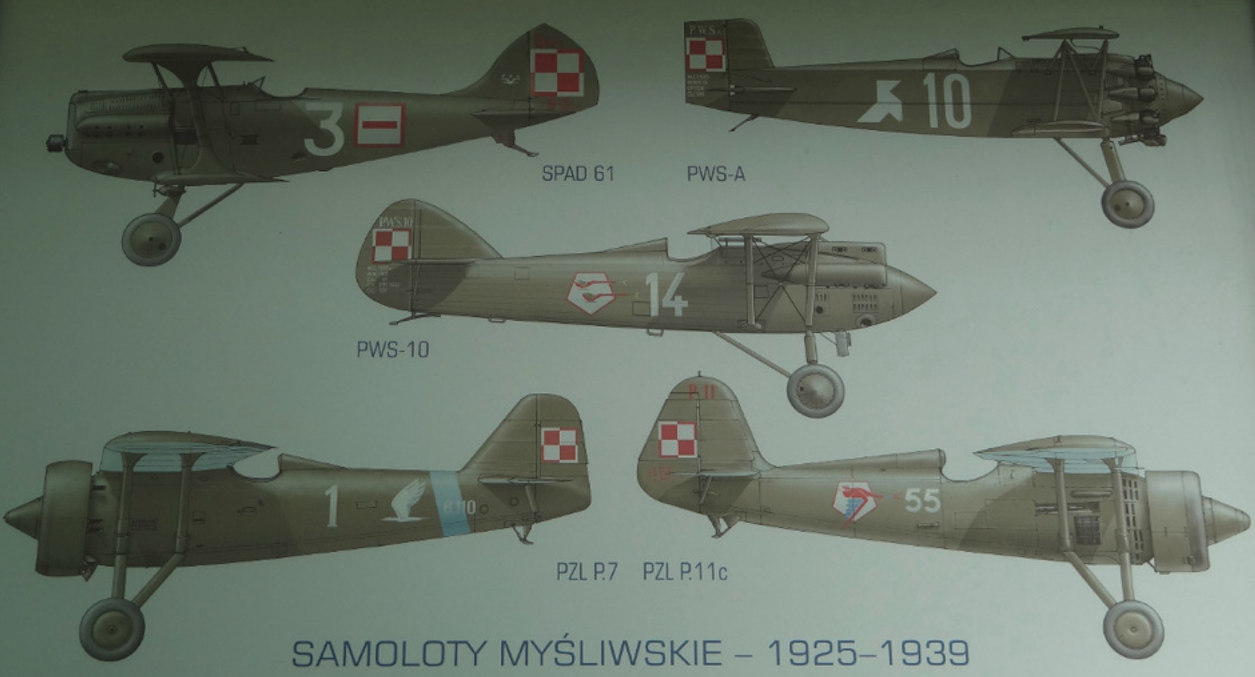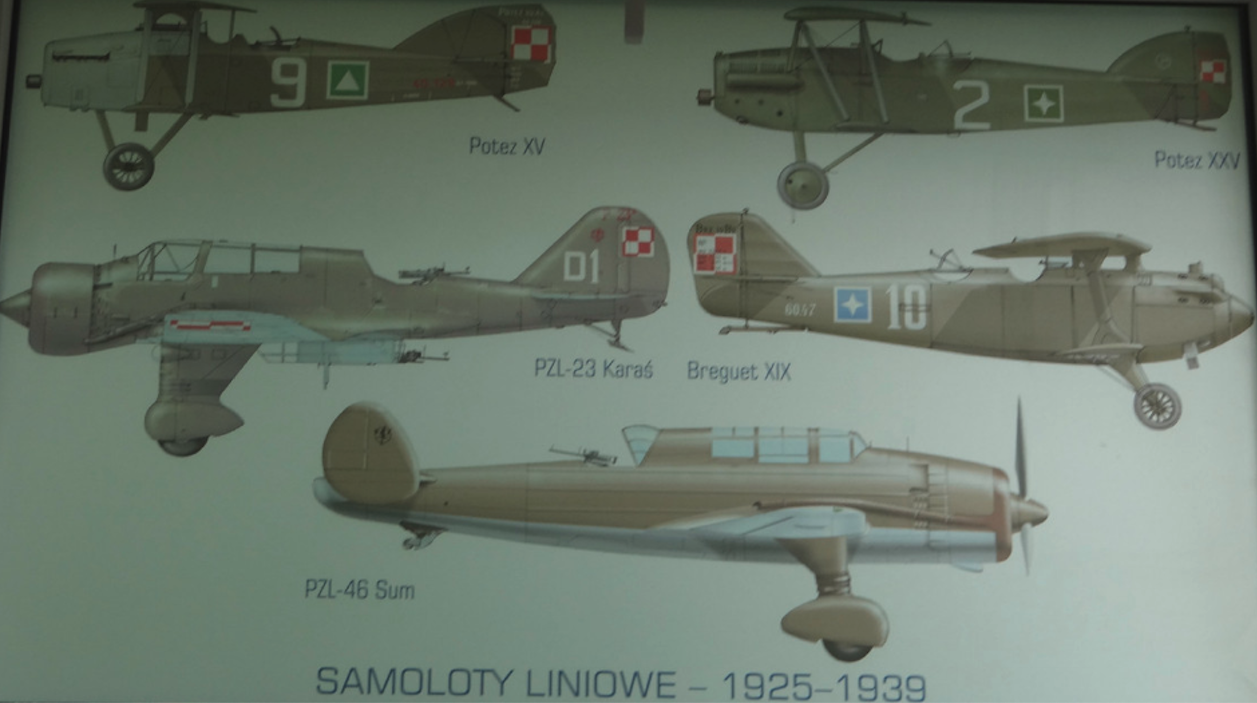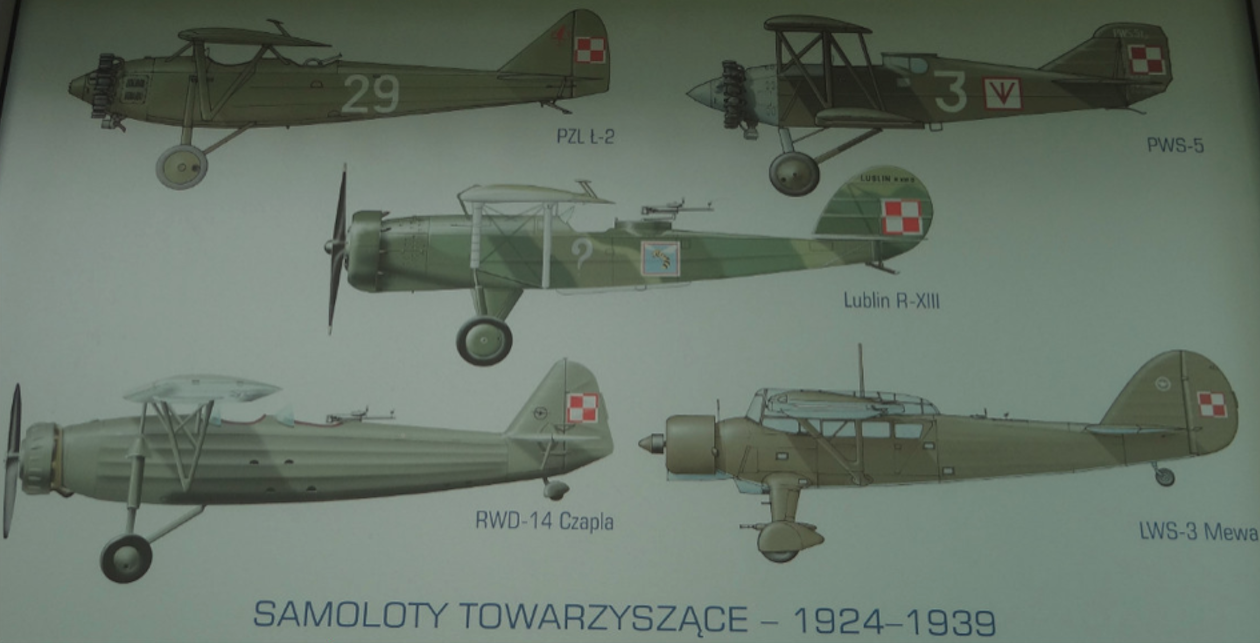Kraków 2017-05-09
Aviation training in Poland.
Part 3.
1919-1920.
Bydgoszcz.
At the end of the Great World War, in 1918, there were only 14-16 planes, 10 staff and about 100 ground service personnel at Bydgoszcz Airport. Most of them were Poles. There was a school of aviation observers here. At the outbreak of the Greater Poland Uprising, two Polish pilots (Antoni Bartkowiak and Alojzy Błażyński) who had served in the unit fled to the Greater Poland Uprising Divisions.
In January 1920, the City of Bydgoszcz officially returned to Poland. Polish authorities took over Bydgoszcz Airport along with buildings and infrastructure. On the other hand, the equipment, machines, devices, spare parts, fuels, oils and lubricants were exported by the German army. All warehouses and hangars have been cleaned and swept. The war did not destroy the airport infrastructure. Not once was the airport bombed. The airport was one of the largest airports in the Republic of Poland, but it was empty. The Germans officially said that "Poland is a seasonal and theoretical state, and when all this is over, everything will return to the borders of the Reich." That is why many German citizens initially stayed in Bydgoszcz.
Relatively quickly, the route from Poznań to Bydgoszcz was re-routed; 10th Intelligence Squadron (12 Breguet planes) and 15th Fighter Squadron (12 Spad and Fokker planes). Both squadrons were soon sent to the eastern front of the war with the Bolshevik army (Russians).
Due to the large facilities of Bydgoszcz Airport, a decision was made to locate almost the entire Polish aviation training here. An important aspect was also the long distance about the ongoing war with Russian troops. Placing the entire aviation training in one center was to facilitate organizational matters.
In August 1920, the French Pilot School was moved from Dęblin, which had already been called the 1st Aviation School. In September 1920, the Lower School of Pilots from Kraków was transferred to Bydgoszcz from Rakowice Airport. On December 1, 1920, an order was issued to merge the schools. On January 1, 1921, the schools were formally merged and turned into a training center for pilots, observers, shooters and mechanics. In this way, Bydgoszcz has become the largest aviation training center in Poland. Lt. Col. pilot Jan Kieżun. Soon, the center was given the name of the Pilot’s School in Bydgoszcz, sometimes also called the Lower School of Pilots in Bydgoszcz. In later years, the school underwent a series of reorganisations, transformations and name changes. Since the mid-20s, training of professional aviation NCOs with various specializations has been centralized here.
The Lower School of Pilots in Bydgoszcz operated in the years 1920-1926. The students were soldiers with other types of weapons, because at that time the Military Aviation was not a separate type of weapon. The school trained officer pilots who were already observers. Officers and technical non-commissioned officers, non-commissioned officers of aviation administration and professional privates sent to the School by military units were also trained.
The pilot training lasted one year and was not just about learning to fly. It consisted of lectures, practical classes and flights. The trainees learned about the construction of the engine and airframe. They took practical classes in local workshops. They learned about navigation, cartography, field studies, and meteorology. They learned how to use radio communication devices. The tactic of using aviation was also important. Until 1924, it was trained only in elementary pilotage, because the school did not have typical combat aircraft. The following French planes were in stock: Caudron G.III, Nieuport 18, Nieuport 23, Morane Saulnier MS-30E.1 and German ones: Brandenburg C.I, Albatros B.II. From 1925, good French line planes were introduced to the state: Breguet XIV, Potez XV.
In November 1926, in connection with the establishment of the Officers’ Aviation School, the Lower School of Pilots was transformed into the Central School of Non-commissioned Aviation Pilots (1926-1929). In the years 1920-1926, about 630 pilots were trained in Bydgoszcz. During the training, 12 soldiers died and a further 12 were injured. About 30 planes were crashed. Nevertheless, the level of training was high.
The Central NCO School of Aviation Pilots (1926 – 1929) continued the previous aviation training. The commandant of the school was Major pilot Tadeusz Prauss, and then Colonel Jerzy Borejsza. The instructors included: Major pilot Jerzy Garbiński, Major pilot Donat Makijonek, Major pilot Bolesław Stachoń, Capt. pilot Zygmunt Pistl, lieutenant pilot Janusz Meissner, lieutenant pilot Bohdan Kleczyński, lieutenant pilot Ludwik Szul.
French patterns were still used in the School: instructions, regulations, etc. The equipment was French. The aircraft used were Hanriot H.28, Hanriot H.19, Potez XV, Potez XXVII, Breguet XIV, Spad 61C.1 (1 copy), Caudron and several Morane Saulnier AR35EP2 aircraft.
Learning to pilot at the Central School of NCOs of Aviation Pilots consisted of three stages: initial, basic and combat aircraft. As part of the theory, students gained knowledge in the field of tactics, the use of gas weapons, field studies, physics, airframe construction, engine construction, communications, radio telegraphy, mechanics, aerodynamics, meteorology, astronavigation, air defense, structures and history of the Polish Army. The studies lasted one year.
In 1929, the Central Air Force NCO Pilots School was incorporated into the Aviation NCO Training Center in Bydgoszcz and was renamed the NCO Pilot School.
The Non-commissioned Aviation Training Center in Bydgoszcz was established in 1928 and was a unit that today we could call the aviation training logistics center in Bydgoszcz. The center gathered all schools and aviation courses at the Szwedowo Airport. In 1929, the facility was renamed Aviation Training Center No. 2, which survived under this name until 1939. Over time, the Center also included flight courses conducted outside Bydgoszcz at other airports. These were mainly specialist courses organized during the summer as part of training grounds and exercises.
Although the training of pilots, observers and deck gunners was very important, the second important field of aviation training was the training of aviation mechanics specializing in: engines, airfoils, gunsmiths, and radio operators. At Szwedowo Airport, major overhauls of engines and airframes were carried out. Planes were repaired after crashes.
In 1926, the first Civil School of Aviation Mechanics in the country was established at the Bydgoszcz Airport, on the basis of the military School of Aviation Mechanics operating since 1922 and the mechanical department at the State Industrial School in Bydgoszcz. Several hundred students studied at the school, and the lectures were conducted by professors of the State Industrial School in Bydgoszcz and instructors from the Central School of NCOs in Aviation. It was from this school that many highly skilled aircraft mechanics came from, who demonstrated extraordinary skills in fighting the German occupier during the Second World War.
Finally, at the end of the 30-year period, the Aviation Training Center No. 2 was located at Bydgoszcz Airport, which included three aviation schools: the Aviation Cadet School – a technical group in Warsaw, the Aviation NCO School for Minors, and the Aviation School Battalion in Świecie. Due to the threat of another war provoked by the German state, in October 1938, the School of Non-commissioned Aviation Officers for Minors was moved to Krosno, where, by order of the Ministry of Military Affairs, a new training center for aviation personnel was to be established. In the Bydgoszcz pilot school, officers and non-commissioned officers studied mainly in the field of basic piloting on courses lasting one year. In the first years of the school’s existence, the so-called Polish pilot school was developed, based on French patterns. The theoretical course lasted in winter, and practical training in the spring and summer season, including Bartel, RWD, Breguet, and Potez airplanes.
In total, during the twenty years, about 1,000 officers, non-commissioned officers and privates were trained at the Bydgoszcz airport. The most famous instructors-pilots in Bydgoszcz were, among others: Maj. Pil. Jerzy Józef Wieniawa-Długoszewski, lieutenant pil. Franciszek Żwirko (a graduate of the school in Bydgoszcz in 1923), Stanisław Skarżyński, Bolesław Orliński, Karol Pniak, Stanisław Płonczyński, Stanisław Rogalski, and Zygmunt Puławski. In the interwar period, Bydgoszcz was one of the top five military aviation training centers next door; Grudziądz, Dęblin, Ławica and Toruń. This continued until, in the 30-year period, basic aviation training organized by the LOPiP league developed.
From 1933 to 1963 (with a war break) there was also a Gliding School in Fordon near Bydgoszcz, which educated about 10% of glider pilots in Poland in the interwar period, and another 4,211 graduates after the war.
Written by Karol Placha Hetman



